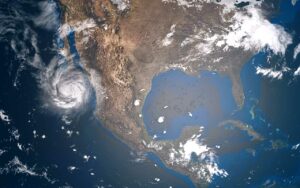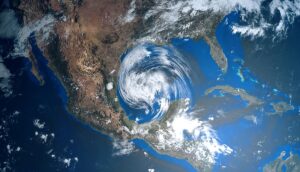When you’re leaving a disaster zone via car, you might encounter hazards like running floodwaters or severe traffic. Evacuation notices can cause people to panic, making matters worse. If you’re caught in a disaster zone and ordered to evacuate, you need to keep these tips in mind as you seek higher ground. Remember: evacuations aren’t suggestions. When local authorities order people to get out of the path of a looming disaster, you need to take heed and get to safety.
Stay Informed
Before any storms or floods arrive, you need to be informed about the weather. Keep an eye on the TV or listen to the radio for local weather reports. If severe weather is on the way, gather your family and pets and be ready to evacuate at a moment’s notice.
It’s also vital that you know local evacuation routes. Research your area’s topography to learn which way to go in the event of rising floodwaters. Have a plan before you hit the road to ensure you don’t get turned around. Severe storms can result in poor visibility, making it difficult to find your way through unfamiliar areas.
Likewise, keep a full tank of gas in your vehicle. There’s nothing quite as heartbreaking as jumping into your car to evacuate and discovering that you’re out of fuel. You likely won’t have any time to stop and gas up when you’re trying to outrun a disaster. Even if there is time, local gas stations will probably be overwhelmed with demand from others who forgot to keep their tanks full.
When the Order Comes
When the evacuation order comes, don’t hesitate. Get out of the storm’s path right away when authorities deem the area unsafe. Don’t panic, follow the evacuation route you’ve studied, and get to safety. Don’t drive too quickly and be patient with heavy traffic. Getting angry at other drivers won’t make traffic any easier.
If you’re concerned about traffic in your region, you can also evacuate before the official order comes down. For instance, if your home is in a low-lying area, you might choose to get to higher ground ahead of the arrival of a hurricane to avoid flooding. If you feel threatened by severe weather, the best course of action is to get to a safer region.
Returning Home
After the floodwaters recede or fire crews extinguish the blaze, make sure you wait for officials to deem the area safe before you return. Just because the initial disaster is over, that doesn’t mean that you’re free to return to your home. Downed power lines, blocked roadways, and other hazards can still be present.
Traffic is also likely to be chaotic following a disaster. Storms and fires can destroy road signs and obscure lane markings. When thousands of people rush back into a region with devastated infrastructure, the result is gridlocked traffic. Be patient, drive slowly, and keep your eyes peeled for any road debris. A car accident is the last thing you need after a severe weather event!









